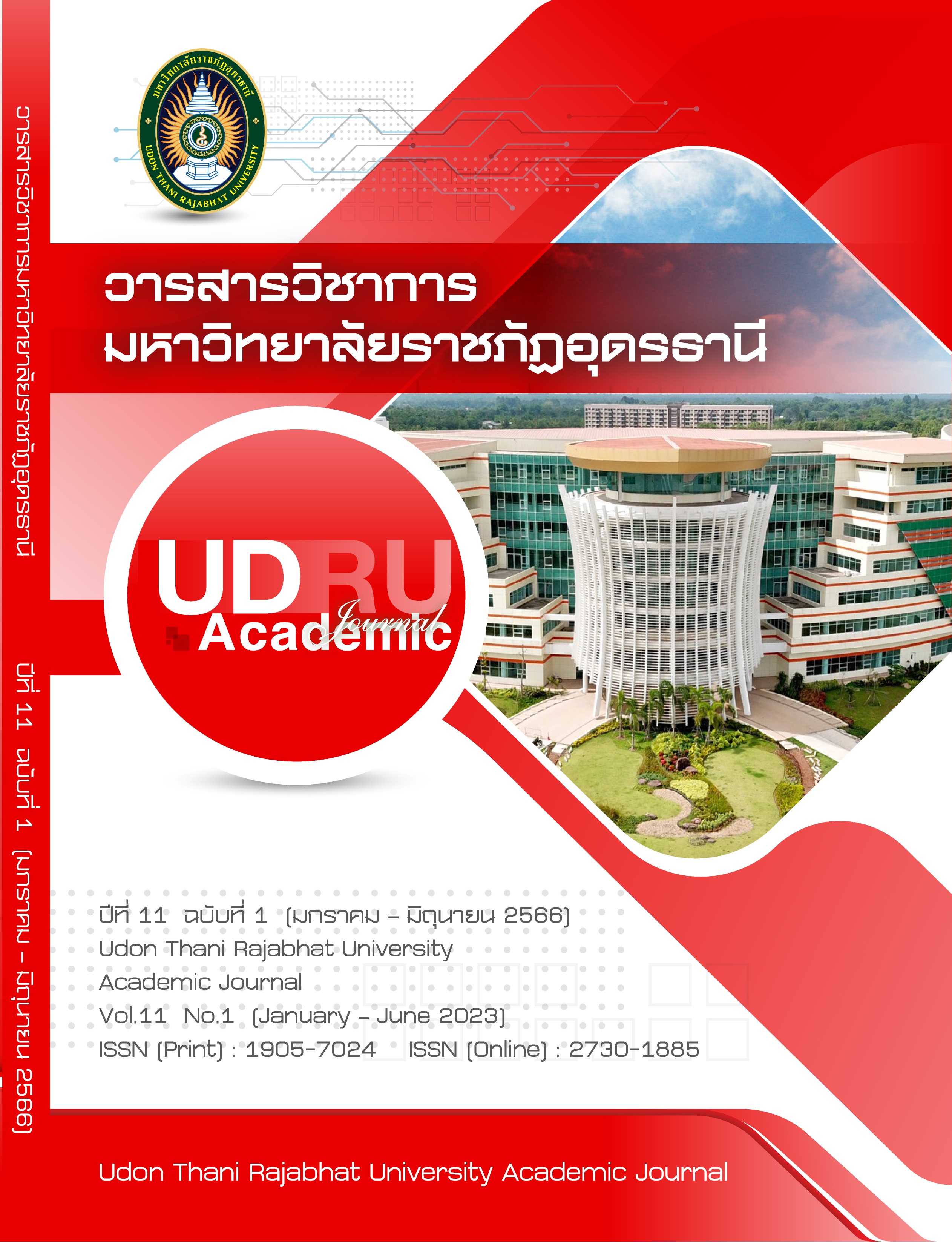Causal Relationship Model of Solar Rooftop Technology Adoption of Electricity Users in Bangkok
Main Article Content
Abstract
The objectives of this research were: 1) to confirm the causal relationship of solar rooftop technology adoption of electricity users in Bangkok and 2) to study the influence of factors affecting solar rooftop technology adoption of electricity users in Bangkok. It consisted of quantitative research by using a survey of 416 sample groups who were interested are installing solar rooftops from electricity users in Bangkok. The data were analyzed by descriptive statistics to find percentage, mean, standard deviation. Inferential statistics analyzed correlational influenced by AMOS program. The results of the research revealed the concordance of the assumption model with the empirical data was X2 = 507.667, X2/df = 2.538, df= 200, P = .000, GFI = .948, CFI = .949, RMR = .029, RMSEA = .041. The model of the causal relationship measure of acceptance of solar rooftop technology of electricity consumers in Bangkok is consistent with the theoretical model set at an acceptable level.
Downloads
Article Details
References
ชูศรี วงศ์รัตนะ. (2549). เทคนิคการเขียนเค้าโครงการวิจัย: แนวทางสู่ความสำเร็จ. กรุงเทพฯ: ไทเนรมิตกิจอินเตอร์ โปรเกรสซิฟ.
ปฐมพงศ์ ตั้งไพบูลย์. (2562). ปัจจัยที่ส่งผลต่อพฤติกรรมการเลือกติดตั้งโซล่าร์รูฟบนหลังคาบ้านของผู้บริโภคในจังหวัดสมุทรปราการ 27 [การค้นคว้าอิสระ
ปริญญาโทที่ไม่มีการตีพิมพ์]. มหาวิทยาลัยรามคำแหง.
พรพจน์ ศรีดัน. (2562). พลังงานทดแทนกับแนวทางในการพัฒนาด้านพลังงาน อย่างยั่งยืนในประเทศไทย, (ใน 45 ปี สถาบันวิจัยสังคม จุฬาลงกรณ์
มหาวิทยาลัย). สถาบันวิจัยสังคม จุฬาลงกรณ์มหาวิทยาลัย.
เริ่ม ใสแจ่ม. (2564). ปัจจัยส่วนประสมการตลาดและปัจจัยจิตวิทยาที่มีอิทธิพลต่อการตัดสินใจติดตั้งโซล่าร์รูฟท็อปในประเทศไทย. วารสารบริหารธุรกิจ
เศรษฐศาสตร์และการสื่อสาร มหาวิทยาลัยนเรศวร 16(3): 101-114.
ศูนย์ข่าวพลังงาน. (2565). โซลาร์ภาคประชาชนปี 65 หลุดเป้าครัวเรือนร่วมโครงการ ไม่ถึง 2 เมกะวัตต์จากเป้าหมาย 10 เมกะวัตต์.
https://www.energynewscenter.com/
สุทิพย์ ประทุม และ สรัญณี อุเส็นยาง. (2565). การยอมรับเทคโนโลยีสารสนเทศในยุควิถีชีวิตใหม่. วารสารลวะศรี มหาวิทยาลัยราชภัฏเทพสตรี. 6(1): 1-18.
Ajzen, I. & Fishbein, M. (1975). Belief, Attitude: ATT, Intention and Behavior: An Introduction to Theory and Research. Reading, MA:
Addison-Wesley.
Cronbach, L. J. (1970). Essentials of Psychological Testing. New York: Harper & Row.
Davis, F. D. (1989). Perceived Usefulness: PU, Perceived Ease of Use: PEOU, and user acceptance of information technology. MIS
Quarterly, 319-340.
Roca, J. C., Garcia, J. J., and Vega, J. D. (2009). The Importance of Perceived Trust, Security, and Privacy in Online Trading Systems.
Information Management and Computer Security, 17(2): 96–113.
Shelley, L. (2014). Human Smuggling and Trafficking into Europe: A Comparative Perspective. Washington DC: Migration Policy Institute.
Schumacker, R.E. and Lomax, R.G. (2010) A Beginners Guide to Structural Equation Modeling. Routledge, New York.
Stevens, J. P. (1992). Applied Multivariate Statistics for the Social Sciences. NJ: Lawrence Erlbaum Associates. Hillsdale.
Tabachnick, B. G. and Fidell, L. S. (2007). Using Multivariate Statistics (5th ed.). New York: Allyn and Bacon.

